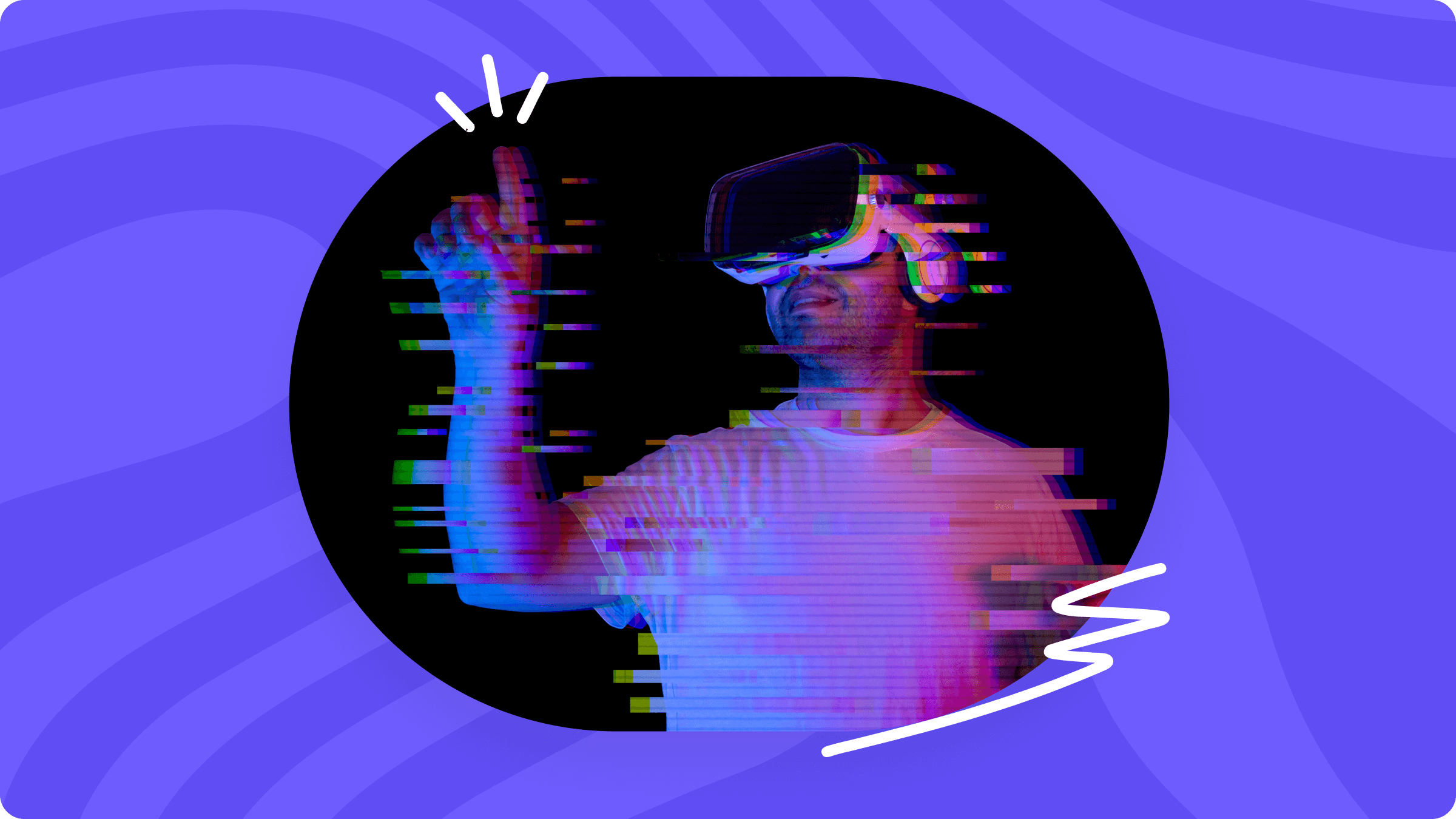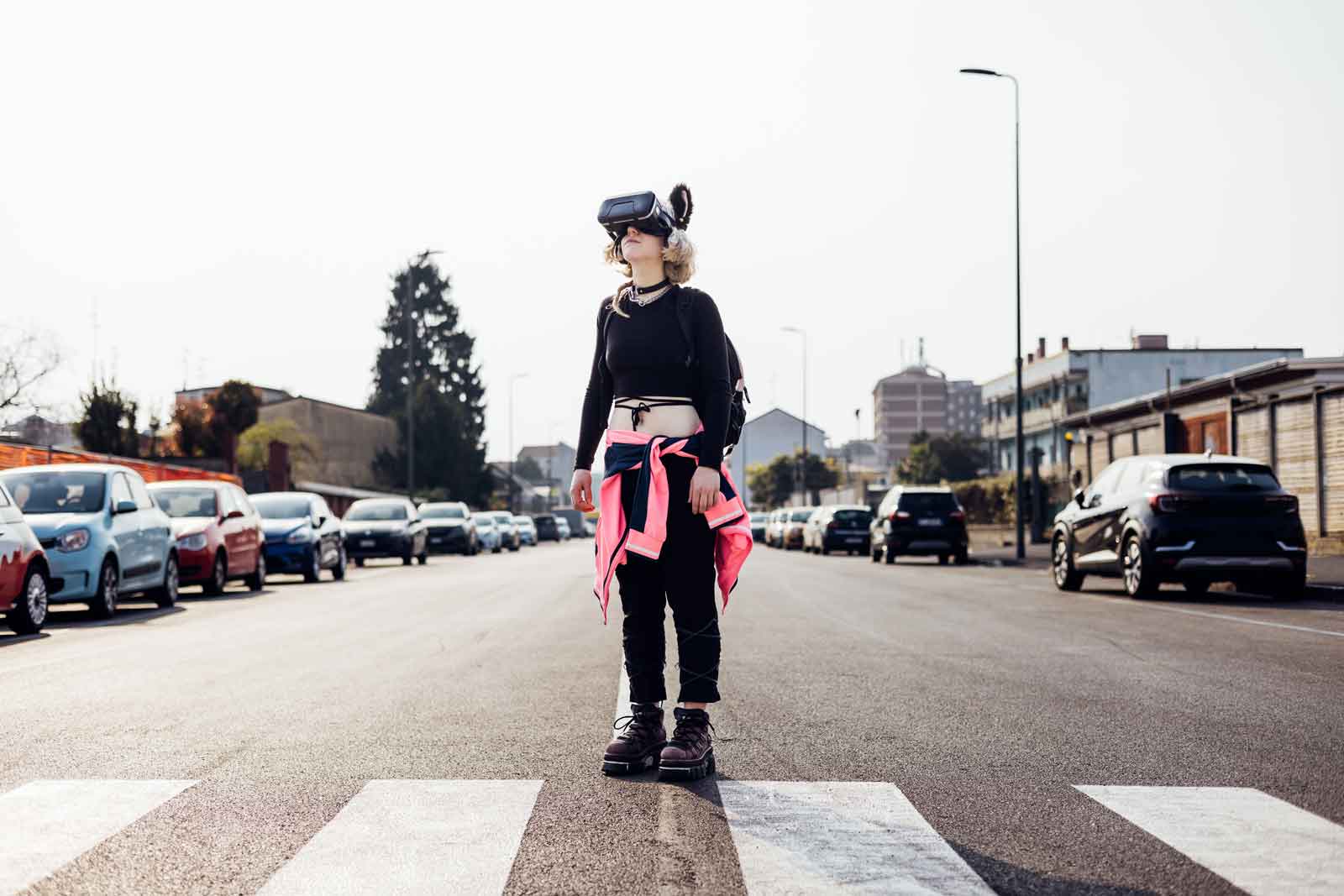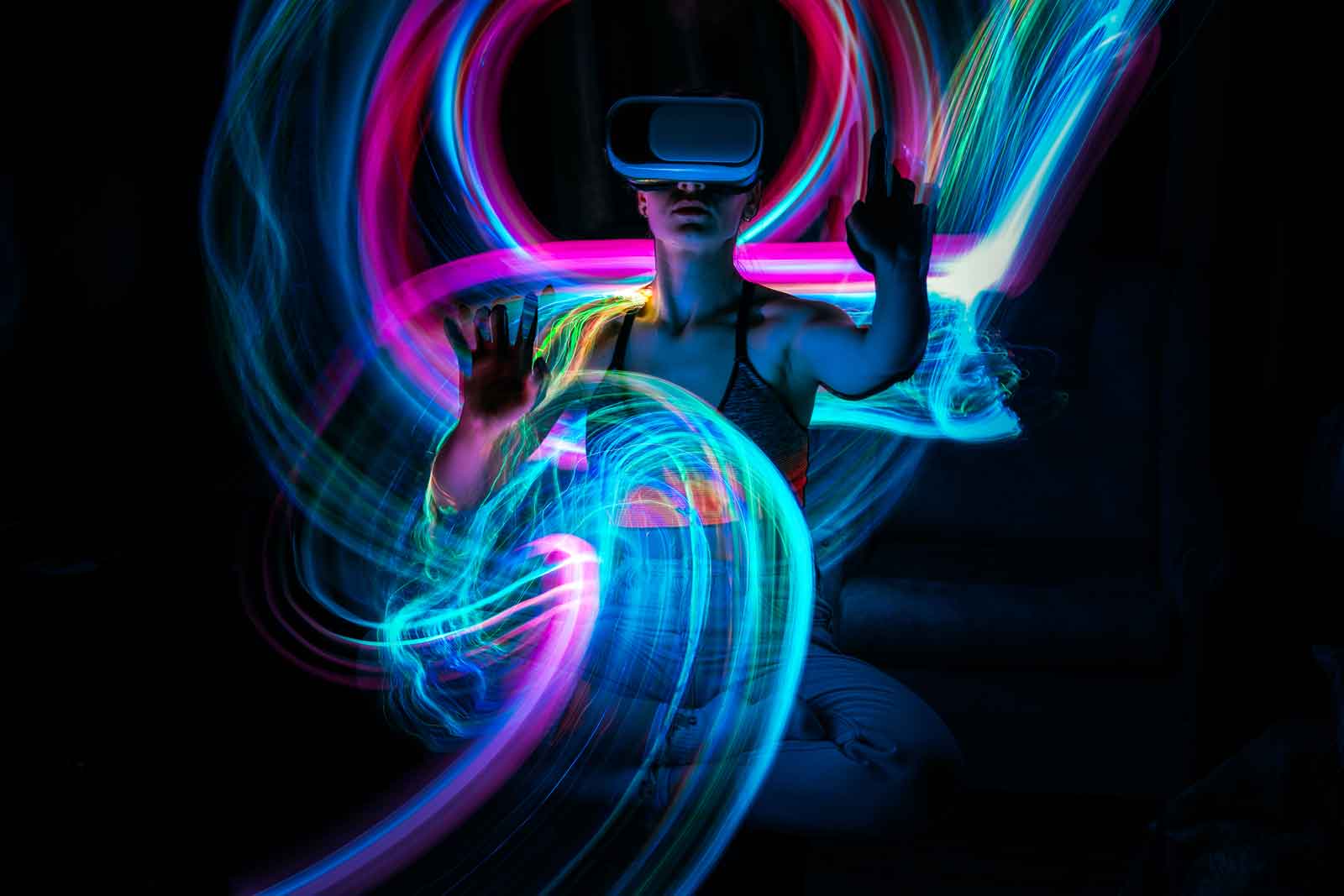Trend Deep Dive: The Metaverse

Everything you need to know about the metaverse, and ideas to help you create items for this growing search trend.
With over 4.8 billion internet users across the globe, the digital world is continually adapting to accommodate new forms of social communication and interaction. A digitally native world is just around the corner – and the demand for tech and design innovation continues to grow.
As the metaverse era begins, consumers are shifting from users to players, and traditional forms of marketing are becoming redundant.
From content design and 3D tools to new communication interfaces that promote immersion, here’s how the metaverse is expected to change UX design like never before.

Image credit: hoangpts
So what exactly is the ‘Metaverse’?
There is no escaping the tech world’s latest buzz word: the ‘metaverse’. But what does it actually mean?
Influencer Marketing Hub defines the metaverse as “something that is always active, exists in real-time, players have individual agency, it’s a self-contained and fully functioning universe and contains user-generated content.”
If it sounds complex and vague, that’s because the term doesn’t really refer to any one specific type of technology, but rather a broad shift in how we interact with technology.
As we adapt to this shift in a user-generated content dominated online environment, the metaverse will continue to transform consumer attitudes, demanding a more active user experience design. From e-commerce and the corporate market to gaming and entertainment, it’s clear that the metaverse expects more of marketers.
But just how will this revolutionize the industry?

Image credit: jacoblund
How Will the Metaverse Change The Future Of Marketing
For savvy marketers, the metaverse could be a game-changer in regards to gaining exposure and increasing revenue. As VR continues to dominate a number of sectors across the globe, the metaverse’s advertising potential is infinite.
While nothing will replace the real world, there will be an increasing number of things people can do in digital environments. We’ll see new forms of immersive design and smart consumer content that can not only easily insert itself into the virtual world, but encourage consumers to interact and communicate with it.
Especially for Gen Z demographics, where 87% of young users are already interacting with current metaverse platforms such as Fortnite from the comfort of their smartphones, the benefits quickly outweigh the costs for companies aiming to gain exposure.
In fact, providing an immersive experience within the metaverse that enables a player to connect and interact with a virtual version of a product or service will translate into higher conversion rates in the real world.

Image credit: peus80
What Does This Mean For UX Designers?
It’s clear that UX designers will need to shift their mindset in the wake of the Metaverse. Rather than designing for passive consumption, the future will centre around active design that encourages consumers to act on their creation and continue to blur the lines between what is real and what is virtual.
Shifting From Users To Players
Designers will need to think of consumers as players, rather than simple users of technology. In order to improve user experience across online platforms, UX designers need to create a wholly immersive experience that enables a player to live and interact with a virtual world, rather than simply experiencing it.
This applies to web design, content creation and advertisements too. As the line between the virtual and real continues to blur, designers need to focus on inserting a product, service or advertisement into the metaverse seamlessly. Consumers are much more likely to interact with UX design that feels natural, authentic and consumer-created.
Start Storytelling With Design
The metaverse is massive, and predicted to only expand in the coming years. With a large following comes a large number of experiences across a diverse consumer group. The key for UX designers is finding a way to connect user experiences to create a compelling story that hooks an audience amongst competitors.
That’s why it’s time to start prioritizing storytelling. In order to gain awareness and exposure, telling a story with your design will immerse consumers for a more natural, customer-led experience with your brand.
Sit Back And Observe
The metaverse is still relatively new, so a smart move for new UX designers on the block would be to simply sit back and observe.
Take a closer look at your competitors and start user testing. Do an audit of your current engagement stats, audience characteristics and site analytics using tools such as Google Analytics and Finteza. Designers need to see how their audience currently interact with the metaverse and understand how their products will behave in new virtual surroundings.
Incorporating 3D tools & VR Design
In order to effectively design for the metaverse, UX designers are moving towards new 3D modelling alternatives such as Tvori and SketchUp, which will enhance modelling and prototyping in a 3D virtual world.
It’s also important for UX and UI designers to get more equipped with the new forms of VR/AR tech on the market. Utilizing elements of augmented and virtual reality within daily life will allow designers to step into the shoes of their consumers and visualize the image they want to create for immersion success.

Image credit: IrynaKhabliuk
What can I create to meet demand in search for items related to the metaverse?
With everyone talking about the metaverse, there is no doubt it will continue to be a highly searched term on Elements. Designers will be looking for metaverse, cyberspace, VR & AR related content to feature in all kinds of projects to help illustrate some of the scenarios described above.
Now that you know everything there is to know about the metaverse, we suggest tagging any relevant items (from photos and graphics to video and audio) you already have on Elements with the below keywords. As we anticipate this trend will grow, you should also consider creating new items to represent this concept:
- Metaverse
- Virtual reality
- Augmented reality
- Cyberspace
- Avatars
Stay on top of future item opportunities and suggested tags through the Trends & Inspiration section of the Hub.
Credit and thanks to Rebecca Barnatt-Smith for the original article featured on the Envato blog.






